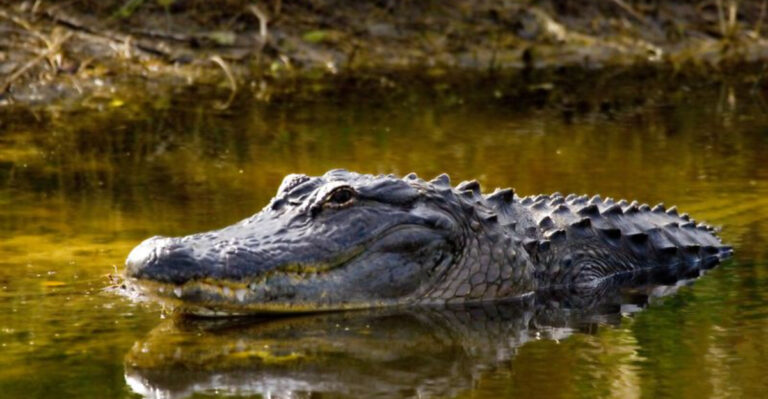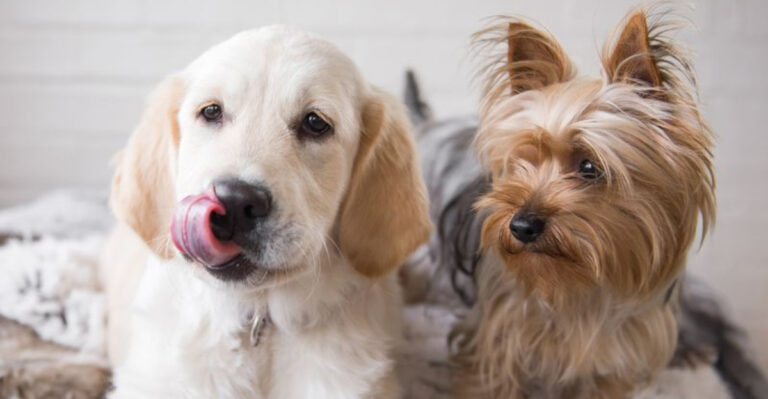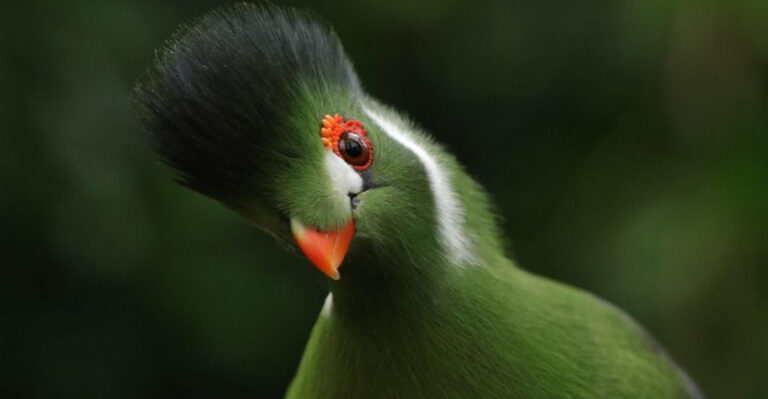Wolves Vs. Dogs: 10 Surprising Similarities And 10 Key Differences
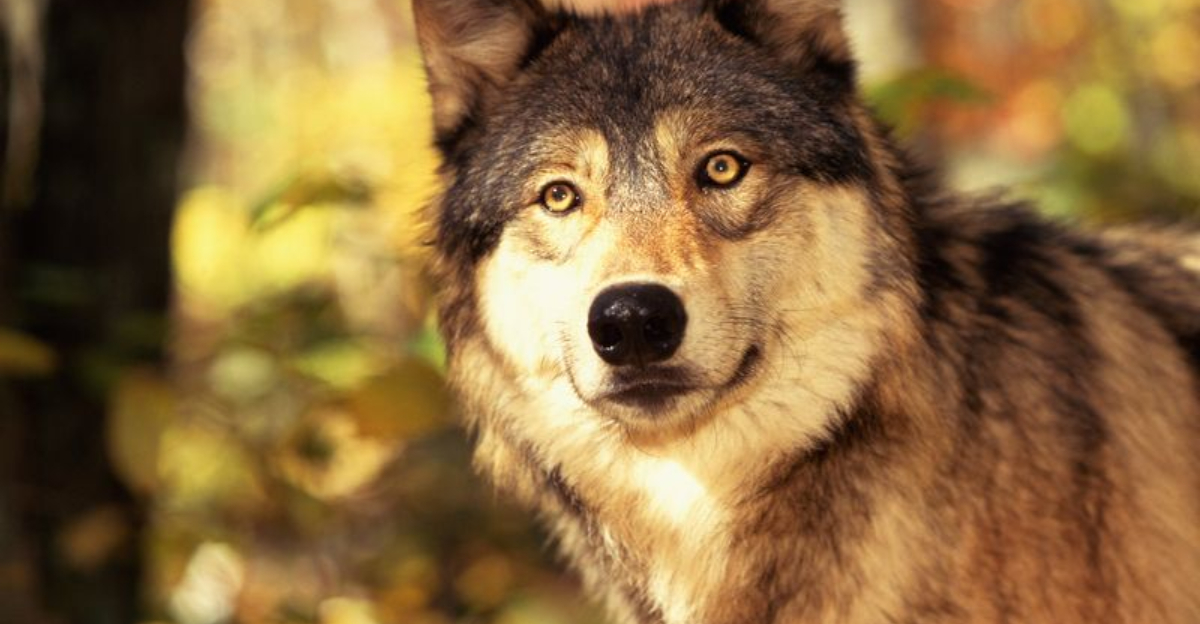
Imagine a creature that roams the wilderness, relying on a pack to survive. Now, picture your fluffy friend at home, wagging its tail. What do they have in common? More than you’d think! Wolves and domesticated dogs share a fascinating history and intriguing similarities, but they also diverge in ways that might surprise you.
1. Genetic Ancestry
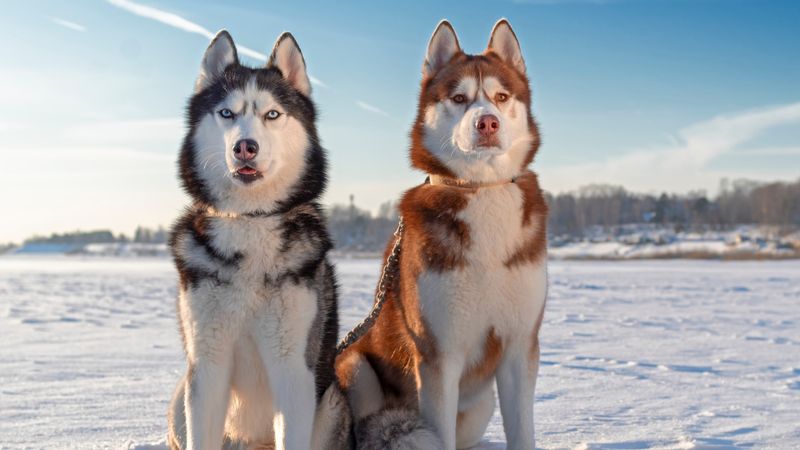
You might be surprised to learn that dogs and wolves share over 98% of their DNA! This incredible genetic similarity stems from their shared ancestry with ancient gray wolves.
Despite the thousands of years that separate them, this genetic link is a testament to their connected evolutionary journey.
Dogs might have become our couch buddies, but their wild cousins have left a lasting imprint. It’s fascinating to think that the fluffball snoozing on your sofa carries a whisper of the wild within its genes.
2. Social Structure
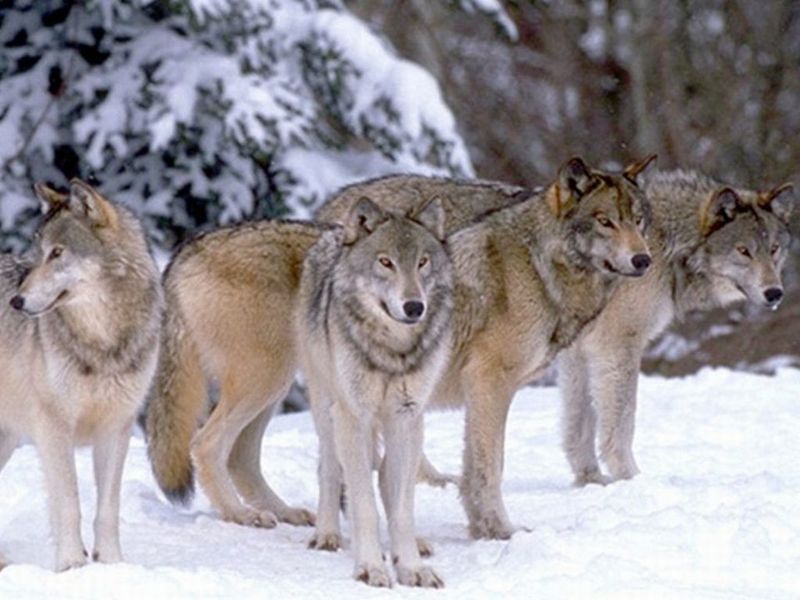
Think of a wolf pack navigating the wilderness, relying on cooperation and hierarchy to survive.
Dogs, too, thrive in social groups, whether it’s a pack of their canine buddies at the park or their human family at home.
Their social structures are more alike than you might imagine. This shared trait highlights their natural instinct to work together and form bonds.
3. Communication Methods
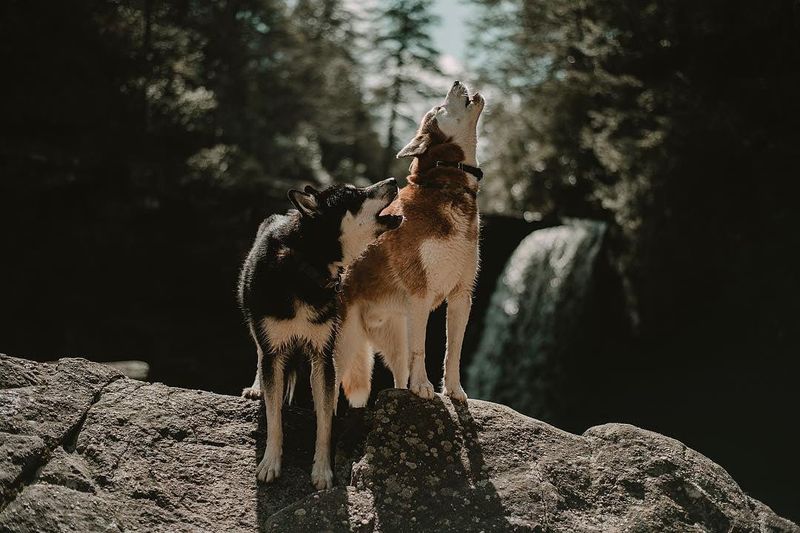
Ever wonder why your dog howls when it hears a siren? Wolves and dogs share a rich tapestry of communication methods – from howling to growling, and body language to whining.
These vocal and visual cues are crucial for cooperation and expressing emotions. While your dog might use barking to get your attention, wolves use their vocalizations to maintain pack unity.
This shared language enriches their interactions and deepens the bond within their social circles.
4. Facial Expressions
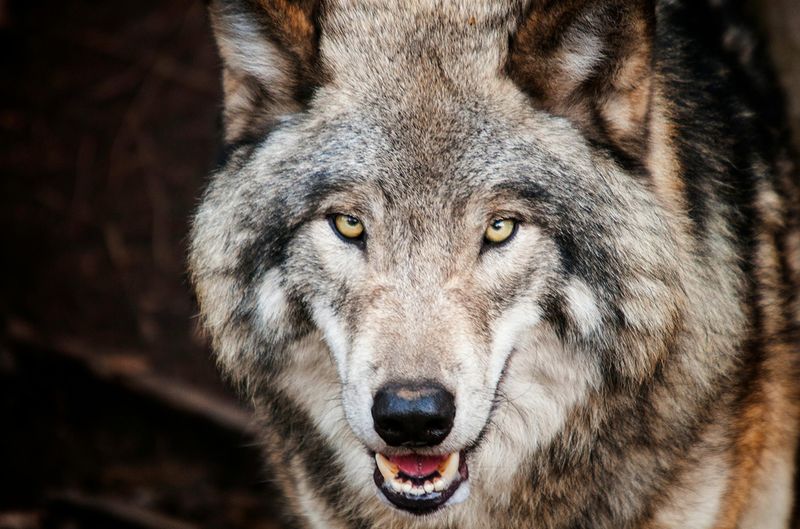
Got a dog that gives you the side-eye? Wolves and dogs both use facial expressions to convey emotions and intentions.
Whether it’s baring teeth or perking up ears, these expressions are a universal language among canines. It’s fascinating how a simple look can communicate so much!
While your dog might use a playful grin to invite a game, a wolf might employ similar expressions to establish dominance or show submission within its pack.
5. Sense Of Smell

Sniffing out the party snacks or tracking a scent in the wild, both wolves and dogs boast an extraordinary sense of smell.
It’s much stronger than ours, allowing them to detect minute scent trails. This olfactory prowess is essential for hunting, tracking, and even social interactions.
So next time your dog spends ages sniffing a tree, remember it’s tapping into a world of information, similar to a wolf analyzing the scents of the forest floor.
6. Territorial Instincts
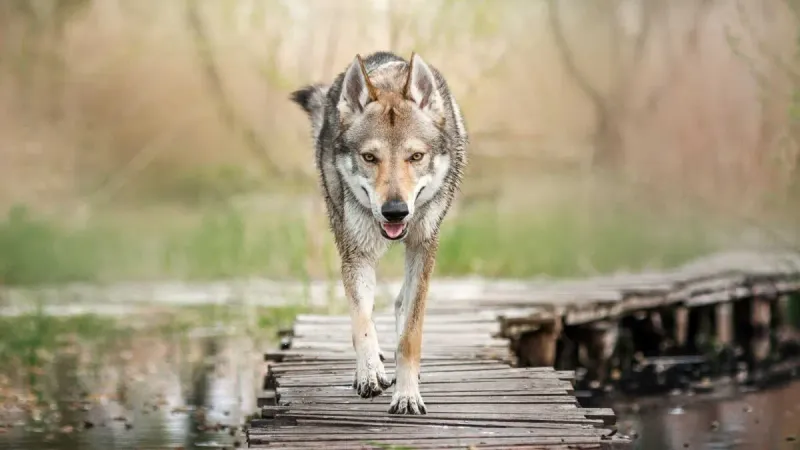
Ever notice how your dog loves to patrol the backyard, making sure everything’s just right? Wolves and many dog breeds naturally mark and defend their territory.
This instinctual behavior is a key part of their social dynamics. For wolves, it’s about protecting hunting grounds and pack safety; for dogs, it’s more about maintaining their home turf.
Although the stakes might be different, the underlying behavior is a fascinating shared trait.
7. Body Structure

Peek under the fur, and you’ll find that wolves and dogs share a similar skeletal and muscular structure.
This is especially noticeable in breeds like Huskies or Malamutes, which closely resemble their wild cousins.
These structural similarities are a nod to their shared ancestry, highlighting the adaptability and resilience that both wolves and dogs possess.
Their bodies are built for survival, whether it’s sprinting across snowy tundras or chasing a ball in the backyard.
8. Breeding Habits

Wolves and dogs share similar reproductive cycles and gestation lengths, but that’s not where the similarities end.
In the wild, wolves typically breed once a year, with the pack supporting the new pups. Domesticated dogs, on the other hand, have adapted to breed more frequently.
Nonetheless, their breeding habits reflect a shared evolutionary strategy aimed at ensuring the survival of their offspring. It’s a cycle of life that’s both wild and familiar.
9. Dietary Needs
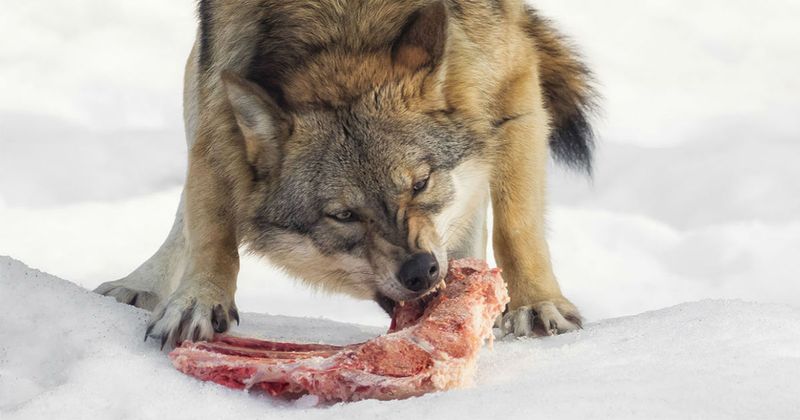
Both wolves and dogs are facultative carnivores, meaning they primarily eat meat but can digest some plant-based foods.
While wolves hunt for survival, dogs have adapted to thrive on a variety of diets, from raw meat to kibble.
This dietary flexibility is a testament to their adaptability, yet their primal carnivorous instincts still linger.
10. Play Behavior
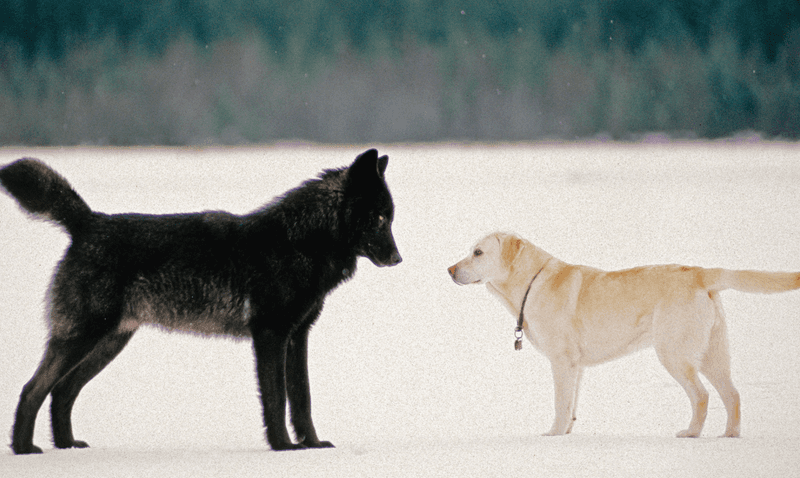
Have you ever watched a wolf pup engage in playful antics with its siblings? Both wolves and dogs exhibit play behaviors, particularly as young pups.
These playful interactions are crucial for bonding and learning essential survival skills. Playtime isn’t just fun and games; it’s a way for both species to develop social bonds and hone their instincts.
So next time your dog brings you a toy, remember it’s a playful reminder of its wild heritage.
11. Behavior Toward Humans
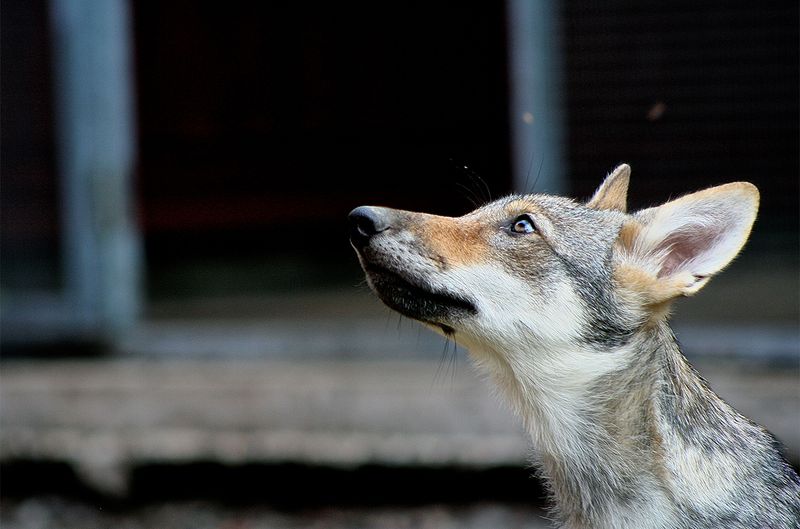
While dogs often crave human attention and affection, wolves remain cautious, even when raised by people.
This difference in behavior speaks volumes about domestication’s impact on dogs, making them more sociable and trusting.
Wolves, in contrast, keep a wary distance, maintaining their natural caution around humans.
12. Domestication Timeline
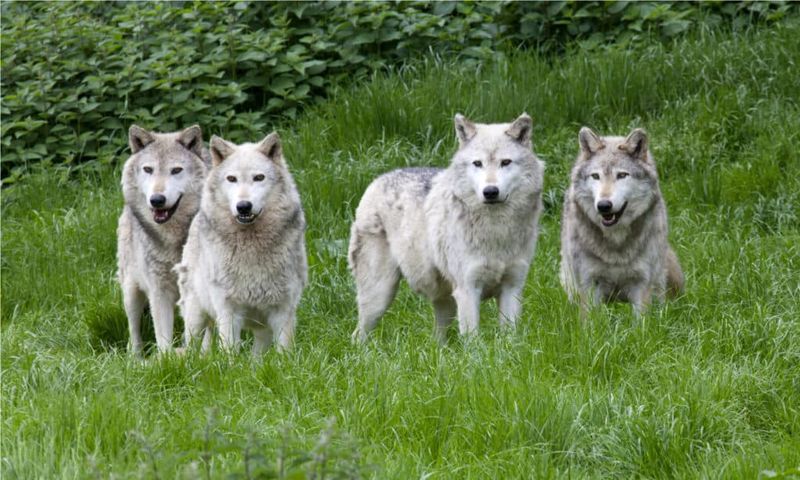
Dogs have been our companions for over 15,000 years, while wolves have continued to roam the wild.
This long timeline of domestication has shaped dogs into the creatures we know today – social, varied, and deeply integrated into human life.
Wolves, on the other hand, have retained their wild essence, untouched by human influence.
This difference highlights the fascinating journey of domestication, a process that has forever changed our relationship with dogs.
13. Skull And Jaw Shape

Take a closer look at their heads, and you’ll notice wolves generally have longer snouts and larger jaws compared to dogs.
These physical differences are adaptations to their respective lifestyles—wolves need powerful jaws for hunting and survival in the wild.
Dogs, having evolved alongside humans, have developed varied skull shapes, often smaller and more compact. This difference in anatomy is a testament to their distinct evolutionary paths and roles in nature.
14. Brain Size
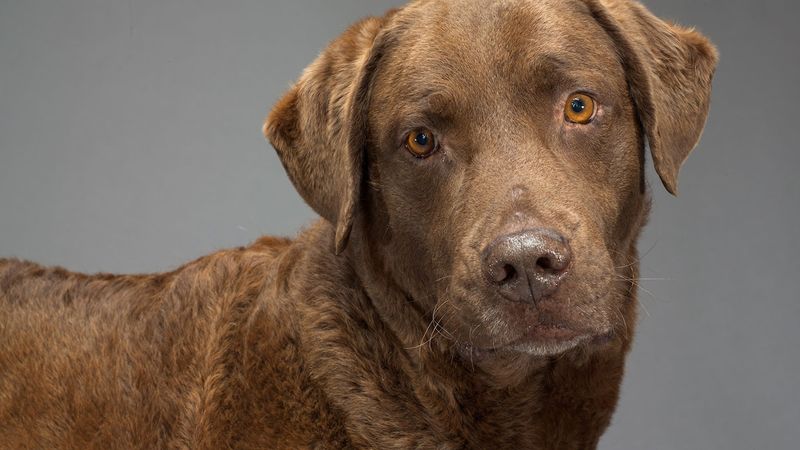
Wolves boast larger brains relative to body size compared to dogs. This difference is crucial for survival in the wild, where problem-solving and strategic thinking are essential.
Domesticated dogs, on the other hand, have adapted to rely more on humans for survival, allowing this brain size difference to persist.
15. Paw Structure
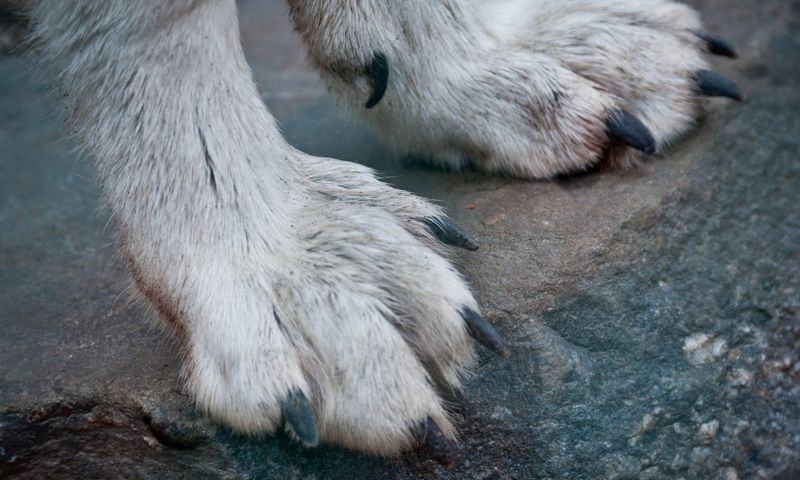
Wolves have larger, more webbed feet with longer toes, designed for traversing rugged, snowy terrains. These paws are a perfect adaptation for life in the wild, aiding in hunting and travel.
Dogs, however, display a wide array of paw shapes and sizes, reflecting the diversity bred into them by humans.
This variation is a striking contrast to the uniformity seen in wolves, highlighting the adaptability and specialization bred into domesticated dogs.
16. Barking
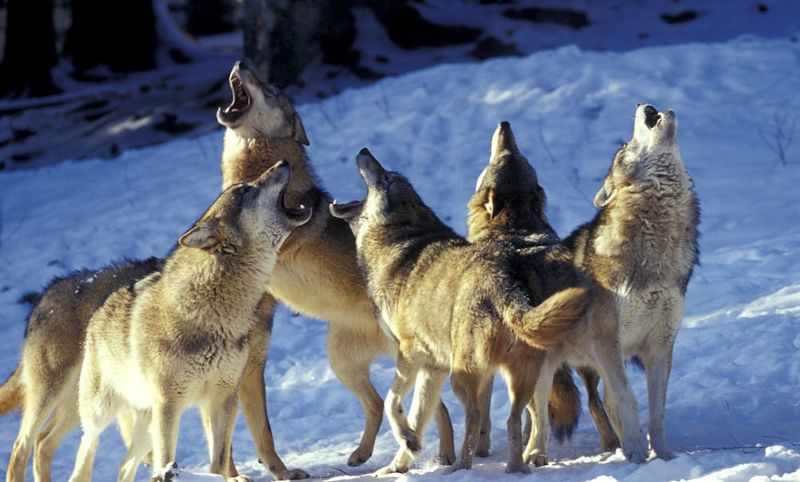
Dogs are known for their varied barking, using vocalizations to communicate with humans and other animals. Wolves, in contrast, rarely bark; they reserve this sound mainly for warnings.
Instead, wolves rely on howling to communicate over distances.
This difference in vocal behavior underscores the adaptability of dogs to human environments, where barking serves multiple social functions.
Wolves, however, maintain their traditional means of communication, steeped in wilderness life.
17. Digestive System
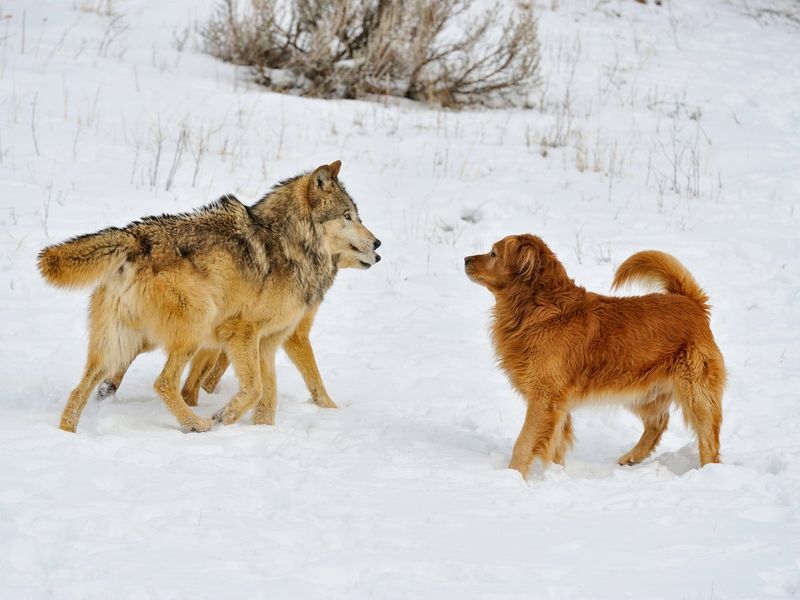
Thanks to their close relationship with humans, dogs have evolved to digest starches and grains better than wolves.
This adaptation allows dogs to thrive on varied diets provided by humans. Wolves, however, remain true carnivores, relying on hunting for survival.
This difference in digestive capability highlights the impact of domestication on dogs, shaping their diets to fit a human-centric world while wolves remain tuned to their natural predatory instincts.
18. Reproduction Frequency
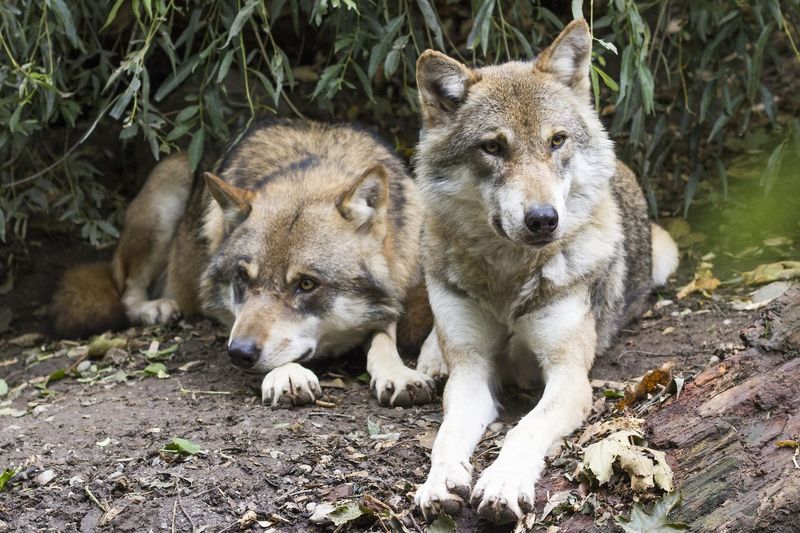
Wolves typically breed once a year, aligning with the seasons and pack dynamics to ensure pup survival.
Dogs, however, have adapted to breed multiple times annually, a trait that reflects their domesticated lifestyle.
This difference in reproductive strategy highlights how domestication has altered dogs, allowing them to thrive in diverse environments alongside humans.
19. Pup Development
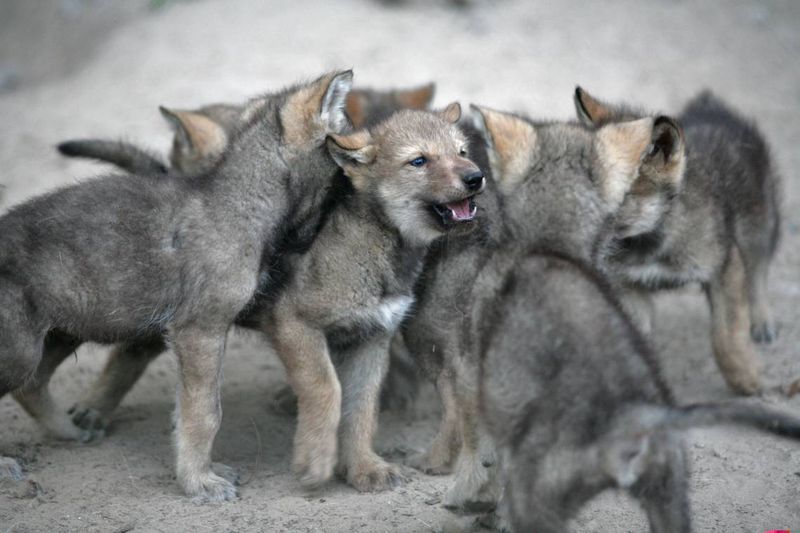
Wolf pups mature more slowly, requiring extended care and learning within the pack. This slower development is crucial for acquiring the skills needed for survival in the wild.
Dog puppies, in contrast, tend to mature faster, benefiting from human care and protection.
This difference in developmental pace underscores the varied pressures and environments that have shaped these animals’ life strategies, highlighting the distinct paths of wolves and dogs.
20. Physical Variation
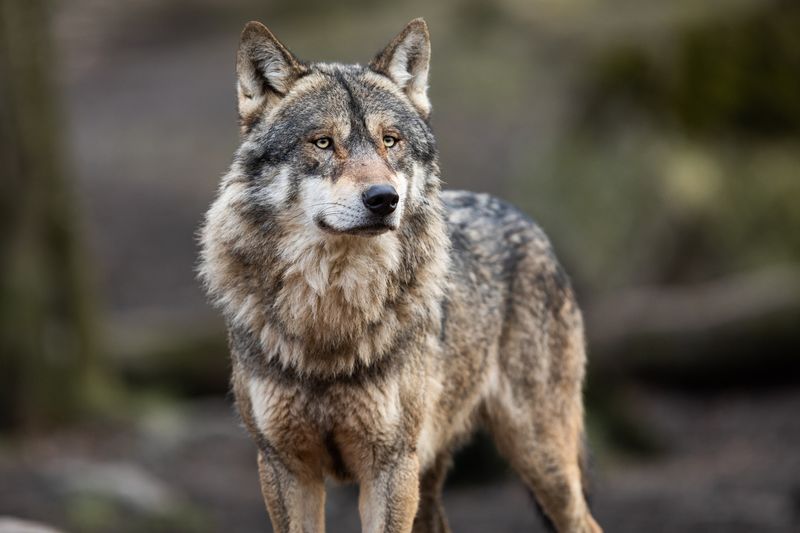
When it comes to variety, domesticated dogs steal the show with hundreds of breeds showcasing drastic differences in size, shape, and color.
Wolves, however, maintain a relatively uniform appearance, optimized for survival. This striking contrast is a vivid example of human influence on dogs, selecting traits for aesthetics, function, or temperament.
The rich tapestry of dog breeds we see today is a testament to this selective breeding, while wolves remain icons of wild beauty.




